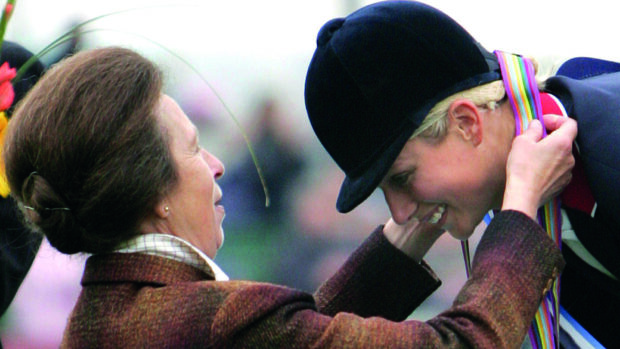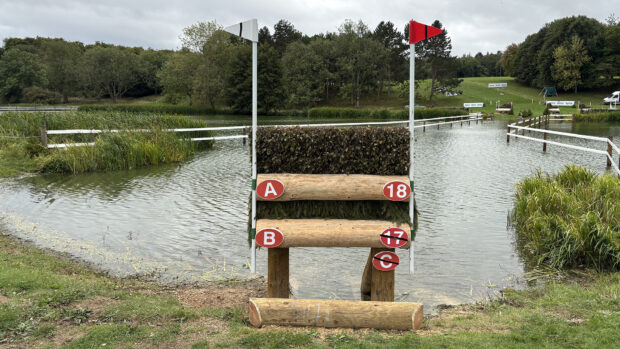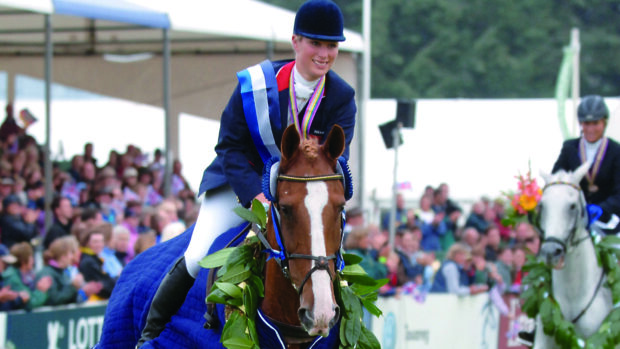In an in-depth interview in H&H this week, Zara Tindall discussed her desire to ride on another championship team for Great Britain and the personalities and aims of her team of horses.
Her two top horses currently are Class Affair, an 11-year-old belonging to Trevor Hemmings’ Gleadhill House Stud, who was ninth at Bramham last year, and Judith Luff’s 14-year-old Watkins. Both horses were aimed at Badminton this spring before the global coronavirus pandemic forced sport to grind to a halt.
Last year, British feed company Dodson & Horrell, who have supported Zara since the start of her eventing career, gave spectators a unique opportunity to watch Zara – former world and European champion and Olympic team silver medallist – and Lauren Hough, a member of the US showjumping team at an Olympic Games and a World Equestrian Games and a Pan-Am Games medallist, work with Zara’s father, H&H columnist, Badminton winner, CCI5* course-designer and celebrated trainer Capt Mark Phillips.
Zara rode both Class Affair and Watkins during the masterclass at the Unicorn Centre, Stow-on-the-Wold, which raised money for the Ella Popely Memorial Fund.
“Hopefully Class Affair is my next top horse,” said Zara. “He’s very wary of what is happening around him and struggles with people and movement, so a night like this is good practice for him.
“Watkins doesn’t really do dressage – he does it on sufferance so he can get to the jumping bits. He’s a really cool horse to ride and loves his job, but we are always catching up after the dressage.”
Lauren rode Candy, a then-10-year-old mare that she owns with Patrick de Roeck, and the seven-year-old mare Delilah, owned and bred by Lea Popely.
“Candy is talented and scopey but maybe a little on the ‘cold’ side for me — I will probably sell her as a top young rider horse,” explained Lauren. “I jumped Delilah in the young horse classes at Hamburg recently; she’s got a very extravagant jump and is part of my future, I hope!”

From left to right: Captain Mark Phillips, Richard Anderson, Lauren Hough, Spencer Sturmey, Zara Tindall, Sam Horrell
Here are some things H&H learnt:
1. The warm-up is a very important part of a competition. Don’t take short-cuts; spend time making sure that your horse is supple to both sides and relaxed.
“But when it comes to jumping, particularly at a three-day-event, you need to get the warm-up done in 10 fences,” says Mark Phillips. “More is a waste of energy. Eventers spend too much time using the practice fences; at big showjumping competitions riders don’t get the fence until they are four horses away from being in the ring. In the showjumping world, riders have a jump, walk and relax their horses, pick up the canter again and have a jump. They don’t canter endlessly round.”
2. The stiller a rider’s lower leg is, the more stable a base they therefore have. This means they can make subtle adjustments with their upper body to help influence the horse.
3. It is important that riders keep their arms soft and relaxed.
4. The control between the fences is the important thing. The fences don’t have to be high to practice and exercise control.
“When you have fences on related distances, you need to solve the puzzle in the best way to suit your particular horse. You do that through the shape of the jump over the first element of the question; where you land after that fence makes a massive difference to how you get through the combination,” says Mark.
5. Horses are prey animals and have 340-degree vision. Their short vision is at the bottom of their eye and they need their heads up to be able to read fences. Cross-country fences aren’t beautifully decorated to make them look pretty for spectators — it is to help the horses read the fence better.
“Understanding how a horse sees is more and more a part of how to make eventing safer,” explains Mark.
6. The more mistakes we make, the more you learn.
“Concentrate on your own performance and don’t get distracted by anyone else,” says Zara.
7. Zara has slowly rebuilt her fitness after having her two children.
“I knew the stronger I was, the safer I would be, so I took it slowly after giving birth and worked hard on my strength,” she says.
Continued below…

Zara Tindall: ‘riding for your country – it’s what dreams are made of’ *H&H Plus*
The former European and world champion tells Catherine Austen about her passion of riding for the British team, why pressure

19 tips from top eventers on how to nail your jumping warm-up and aid success in the ring
Here’s some top tips from Tom McEwen and Richard Jones on how to best warm your horse or pony up,

Subscribe to Horse & Hound magazine today – and enjoy unlimited website access all year round
8. AP McCoy would make a great journalist. His daughter Eve was acting as “arena party” with a friend, and he came into the arena at the end of the demonstration and asked Zara and Lauren: “Which would I need more talent for, eventing or showjumping?” Then he asked Zara: “Who did you look up to more, your mother [former European eventing champion The Princess Royal] or your father?” Needless to say, he didn’t get a straight answer to either question…
9. Mark Phillips believes that Zara, Lauren and AP all have the same things in common: “Love of the horse, balance and coordination. They have that affinity with the horses that is so important. All three could have got to the top in any discipline they chose.”
Watch the masterclass here below…
Don’t miss this week’s H&H where we bring readers an exclusive insight into Her Majesty’s relationship with her horses. This week’s (11 June) edition of H&H is a royal special, featuring both The Queen and her granddaughter Zara Tindall, released to coincide with Her Majesty’s official birthday, and available to buy online and in shops.




